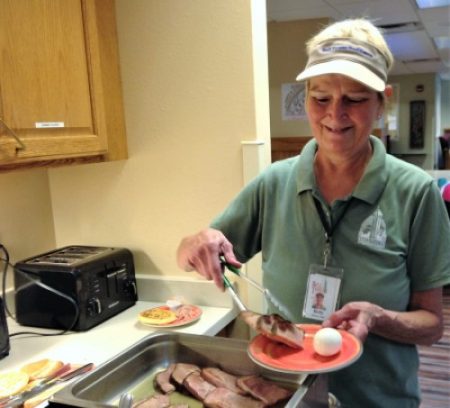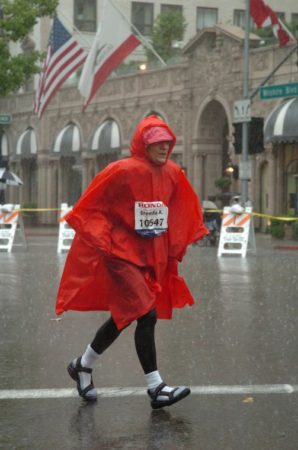Along the eastern coast of Florida between Miami and Orlando is a Continuing Care Retirement Community (CCRC). I’ll be a temporary resident starting on Election Day. (I’m still studying the 12 County and State Measures in the State of California’s 142-page General Election book, before voting prior to departure.) Every vote counts. Please vote… especially, in this highly contentious election.
 Once again, I’ll stay onsite to experience the lives of my audience members. In this case, half of the attendees may be the residents of John Knox Village (JKV) CCRC. As a keynote speaker, I have enjoyed luxury accommodations over a 40-year career; however, I also like to know my hosts and audiences more. Once, I stayed in a secured Memory Care unit in Wisconsin. Another time, in a convent with nuns.
Once again, I’ll stay onsite to experience the lives of my audience members. In this case, half of the attendees may be the residents of John Knox Village (JKV) CCRC. As a keynote speaker, I have enjoyed luxury accommodations over a 40-year career; however, I also like to know my hosts and audiences more. Once, I stayed in a secured Memory Care unit in Wisconsin. Another time, in a convent with nuns.
This time, I may stay in Cassels Tower. CCRCs, or Continuing Care Retirement Communities, offer a range of options for people, starting with independent living. As one’s needs grow, one continues to assisted living, memory care, and finally, hospice.
But I’m getting ahead of myself.
First, we need to grow up. As we grow older, we can explore ways to age greatly, as the JKV Foundation labels it.
I love that Greatly part.
The state of Florida suffered a double-dose of devastation following Hurricanes Helene and Milton. One of my retired friends along the west coast of Florida (St. Petersburg-Tampa area) reported two-feet of water on their ground floor after high winds and flooding wrought damage. Millions were without power and water across the southeastern states. Videos show thriving towns totally wiped away after the floods.
Over a tw0-week period including the Thanksgiving holiday, I will be deployed by the Red Cross to help in the southeastern states or elsewhere. So many have been uprooted from their lives due to nature’s fury.
Before then, a sneak peek…
How do we Change the Narrative on Aging Greatly as a Caregiver?
We serve. We connect with people. But first, we must be strong enough to focus beyond ourselves. We can then serve those who need us; whether as a caregiver or a disaster responder.
The one question I’m often asked by spouses, partners, and those affected by disaster is, “How long will this go on?”
On the surface, such a question from a caregiver sounds callous. Yet, the question is asked by those who are 100+% committed to their loved ones. Caregivers enthusiastically embrace their role by sprinting. As the days turn to weeks and months, they grow exhausted.
Caregiving is a marathon.
 As the months grow into years, we must pace ourselves. We must take time out for self-care. While running the Los Angeles marathon (26.2 miles) during some of Los Angeles’s worst weather (it even hailed), I stopped to use the toilet and drank some hot coffee! Self-care is important even during a race. Caregiving is not a 100-meter (328 feet) give-it-your-all sprint. We’re in it for the long haul. If we don’t pace ourselves, we’ll grow weary, exhausted, and overwhelmed. We’ll struggle to keep up. Our health will suffer. We’ll be quick to anger. Scariest of all? We’ll experience bouts of caregiver dementia.
As the months grow into years, we must pace ourselves. We must take time out for self-care. While running the Los Angeles marathon (26.2 miles) during some of Los Angeles’s worst weather (it even hailed), I stopped to use the toilet and drank some hot coffee! Self-care is important even during a race. Caregiving is not a 100-meter (328 feet) give-it-your-all sprint. We’re in it for the long haul. If we don’t pace ourselves, we’ll grow weary, exhausted, and overwhelmed. We’ll struggle to keep up. Our health will suffer. We’ll be quick to anger. Scariest of all? We’ll experience bouts of caregiver dementia.
On Thursday, November 7, attendees and I will explore The 3 Cornerstones of Aging Greatly as a Caregiver.
As for Cassels Tower? After writing about CCRCs more than a decade ago, I may just move in!
For another take on my experience staying onsite when speaking, click to read What I Learned while Staying in Memory Care








